Robert Lea is a science journalist in the U.K. whose articles have been published in Physics World, New Scientist, Astronomy Magazine, All About Space, Newsweek and ZME Science. He also writes about science communication for Elsevier and the European Journal of Physics. Rob holds a bachelor of science degree in physics and astronomy from the U.K.’s Open University. Follow him on Twitter @sciencef1rst.
Latest articles by Robert Lea

Hello, neighbor! See the Andromeda galaxy like never before in stunning new image from NASA's Chandra telescope (video)
By Robert Lea published
Andromeda never looked as good as it does in a new image from the Chandra X-ray observatory and a range of powerful telescopes. A fitting tribute to dark matter pioneer Vera Rubin.

Astronomers discover baby planets taking their 1st steps in nearby stellar nursery (images)
By Robert Lea published
Astronomers have discovered the first step in planet birth, finding hitherto unseen structures in 78 planetary disks in the star-forming region of Ophiuchus.

Alien life could survive deadly stellar radiation, Earth's desert lichen reveal
By Robert Lea published
A walk in the desert and a curious discovery could have revealed that the secrets of alien life grow in the harshest conditions on Earth in the form of lichen.

The final trailer for 'Fantastic Four: First Steps' is here! 'Say the thing!'
By Robert Lea published
With exactly a month to go until the release of Fantastic Four: First Steps, the final trailer reveals more Galactus, more Franklin, but no Clobberin' Time... yet.
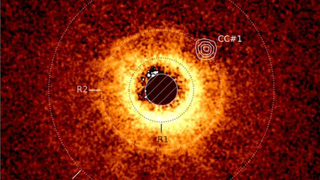
The James Webb Space Telescope has discovered its 1st exoplanet and snapped its picture (image)
By Robert Lea published
The James Webb Space Telescope has discovered its first exoplanet, TWA 7b which is also the lightest exoplanet ever to be directly imaged.

Astronomers thought a mysterious radio burst came from deep space. It was actually a dead NASA satellite
By Robert Lea published
A mysterious and powerful blast of radio waves detected last year, suspected to originate far beyond the Milky Way came from a long-dead NASA spacecraft in Earth's orbit.

Astronomers discover origins of mysterious double hot Jupiter exoplanets: 'It is a dance of sorts'
By Robert Lea published
Astronomers have discovered the strange dance that leads to the creation of rare "double hot Jupiters" in binary star systems that are "just right."
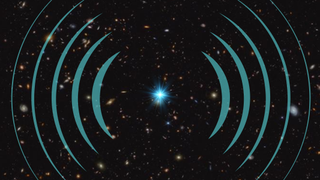
Radio signals from the dawn of time could help 'weigh' the universe's 1st stars
By Robert Lea published
A radio signal from the dawn of time could help scientists weigh the first stars and reveal how they lifted the cosmic darkness.

Vera C Rubin Observatory reveals 1st stunning images of the cosmos. Scientists are 'beyond excited about what's coming'
By Robert Lea published
The Vera C. Rubin Observatory has released its first images, providing a staggering glimpse at the observing power it will unleash when it begins its decade-long survey.
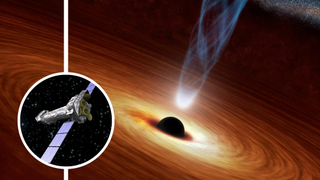
This supermassive black hole is eating way too quickly — and 'burping' at near-light speeds
By Robert Lea published
Using the XMM-Newton telescope, astronomers have witnessed high-speed "burps" erupting from a distant overfeeding supermassive black hole.

A spinning universe could crack the mysteries of dark energy and our place in the multiverse
By Robert Lea published
The universe seems to be spinning, and that could explain what dark energy is and why it's weakening while revealing our place within the multiverse.

This galaxy cluster has mysterious cosmic tendrils over 200,000 light-years long (image)
By Robert Lea published
Astronomers have taken an unprecedentedly detailed look at the tendrils and filaments that wrap around supermassive black hole-dominated galaxies of Abell 2255.

1st images from the Vera C Rubin Observatory will drop on June 23. Here's why that's such a big deal
By Robert Lea published
The Rubin Observatory will reveal its first images on Monday. Space.com spoke to scientists who explained why this will be a monumental event for astronomy.

Astronomers discover the largest comet from the outskirts of the solar system is exploding with jets of gas
By Robert Lea published
The monsterous 85-mile-wide comet C/2014 UN271 isn't just the largest icy rock in the Oort Cloud, it's the second most distant that is chemically active.

'The models were right!' Astronomers locate universe's 'missing' matter in the largest cosmic structures
By Robert Lea published
Using the XMM-Newton telescope, astronomers have discovered a vast 23 million light-year-wide tendril connecting galactic clusters and containing much of the universe's missing matter.
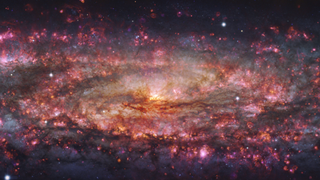
Astronomers capture the most intricate picture of a galaxy in a thousand colors ever seen (photo, video)
By Robert Lea published
A stunning new image of the Sculptor Galaxy, located 11 million light-years away, painted in thousands of colors by the VLT, reveals the intricacies of galactic systems.

Tiny ‘primordial’ black holes created in the Big Bang may have rapidly grown to supermassive sizes
By Robert Lea published
Supermassive black holes that seem too large to exist in the early universe may have grown from primordial black holes formed in the first second after the Big Bang.

Mysterious radio pulses detected high above Antarctica may be evidence of an exotic new particle, scientists say
By Robert Lea published
A mystery signal detected high in the sky above Antarctica defies current models of physics and could represent a new particle, scientists say.

How do baby planets grow? Study of 30 stellar nurseries sheds new light
By Robert Lea published
Astronomers have used the ALMA radio telescope to investigate how planets grow in protoplanetary disks of gas and dust around young stars.

Roman Space Telescope will use a century-old idea from Einstein to probe the nature of mysterious dark matter
By Robert Lea published
Get ready for a new Roman Empire: A NASA space telescope will detect a staggering wealth of intricate gravitational lenses that could help unlock the mysteries of dark matter.

Huge galaxy cluster is wrapped in a cocoon 20 million light-years wide, NASA space telescope finds
By Robert Lea published
Using NASA's Chandra X-ray space telescope, astronomers have discovered an entire galaxy cluster wrapped in a 20 million light-year-wide envelope of charged particles.
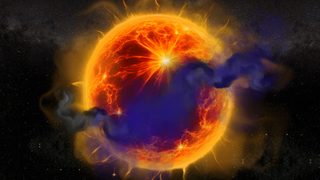
Dark matter 'lampshades' dimming stars could solve one of the greatest scientific mysteries
By Robert Lea published
Dark matter "lampshades" could slip between Earth and distant stars, causing tiny amounts of dimming that may help explain one of the greatest puzzles in science.

Scientists find universe's missing matter while watching fast radio bursts shine through 'cosmic fog'
By Robert Lea published
Rapid bursts of energy that last milliseconds but emit as much energy as the sun does in decades are helping astronomers pierce the cosmic fog between galaxies to find the universe's missing matter.

Supernovas may have triggered life-threatening changes in ancient Earth's climate. Scientists say it could happen again
By Robert Lea published
Ancient supernovas may have blasted Earth with powerful radiation, causing dramatic changes in our climate, and could do so again, posing a threat to life.
Breaking space news, the latest updates on rocket launches, skywatching events and more!


